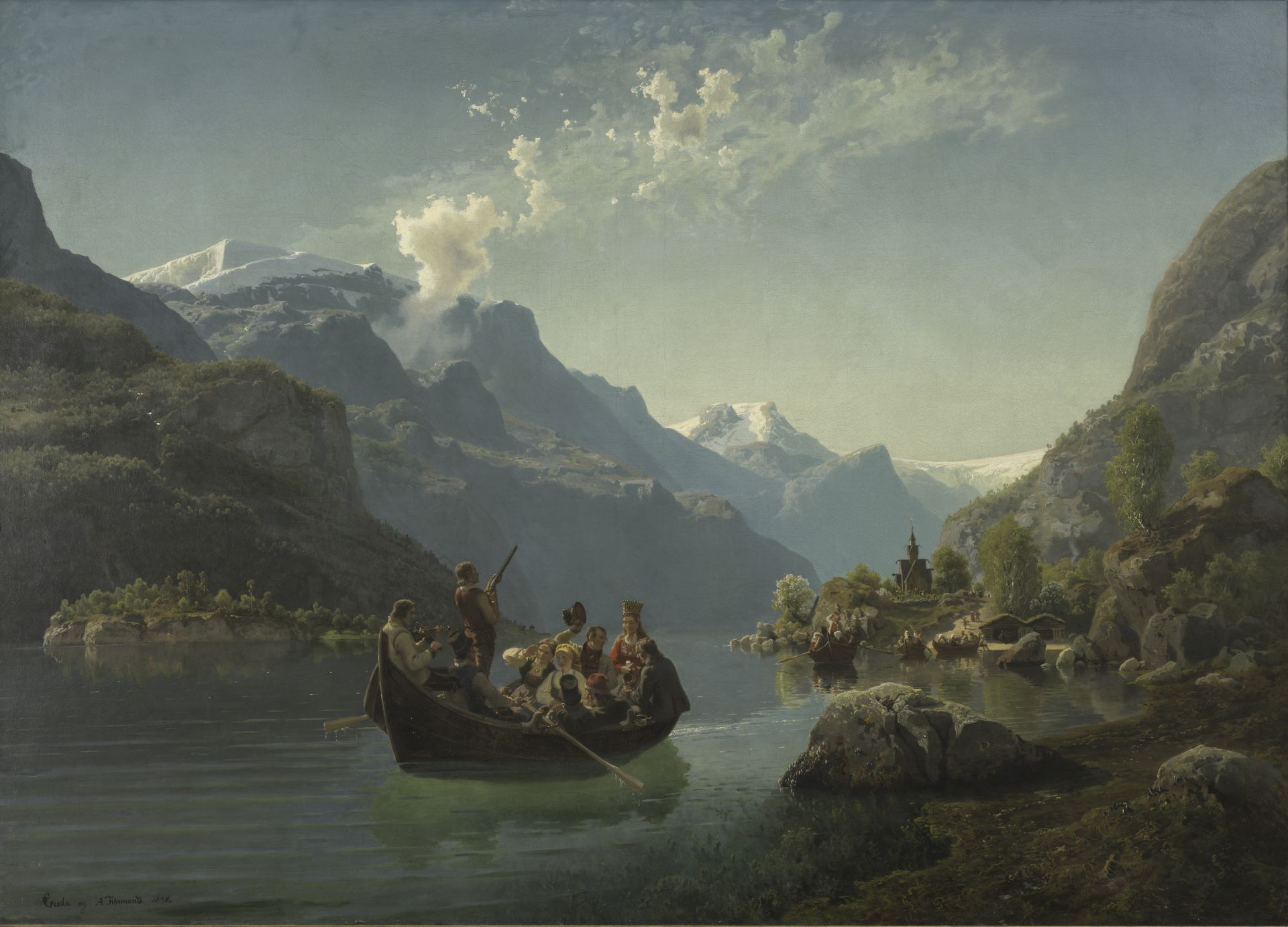Bridal Procession on the Hardangerfjord
Hans Gude. Adolph Tidemand
Transcription
Narrator:
The violinist and composer Ole Bull was an international star in the middle of the 19th century.
Eilif Salemonsen:
His performances of both his own and others' compositions were virtuosic. He had an incredible technique and a personal radiance which enchanted the audience.
Narrator:
This is Eilif Salemonsen, art historian at the national museum.
Eilif Salemonsen:
Ole Bull has his own part in the exhibition "Master to Master", where both artwork and instruments tell stories about Bull and his importance to Norwegian cultural life.
Here you can see Tidemand and Gude's lesser-known version of Bridal Procession on the Hardangerfjord, painted in Christiania in the autumn of 1848, where Ole Bull was the model of the fiddler in the boat.
The revolutionary unrest in Europe this year brought both visual artists and musicians home to Norway and Christiania for a period.
Narrator:
In this part of the exhibition you can also see the German painter Elisabeth Jerichau Baumann's portrait of Bull.
Eilif Salemonsen:
Here he is depicted with his violin, made by Gasparo "da Salo" in Cremona in the mid-16th century. The characteristic violin is also on display in this part of the exhibition.
Bull is depicted against a background of Norwegian mountains, which refers to his inspiration from Norwegian nature and folk music.
Bull also played an important role in promoting Norwegian folk music, both as a form of expression in itself, but also as a source of inspiration for art music.
Narrator:
In this part of the exhibition you will also find Adolph Tidemand's drawing of Torgeir Augundsson, best known as Myllarguten, the most famous hardanger fiddle player of all time.
Eilif Salemonsen:
The natural talent from Telemark became the first fiddler to give a concert on a public stage in the winter of 1849, when, at the invitation of Bull, he performed with him in the Masonic Lodge in Christiania. Many from the cultural elite were present, and the concert aroused great excitement among many. The drawing was probably made in connection with these events in Christiania in the winter of 1849.
Narrator:
Bull was a visionary person, and his importance to Norwegian cultural life was signifcant.
Eilif Salemonsen:
At this time, Danish was the language used in the theatres, and during his stay in Christiania, Bull launched his vision for a real Norwegian theatre, with plays by native playwrights and actors who spoke Norwegian. And already in 1850, The Norwegian Theatre opens in Bergen, partly financed by Bull himself.